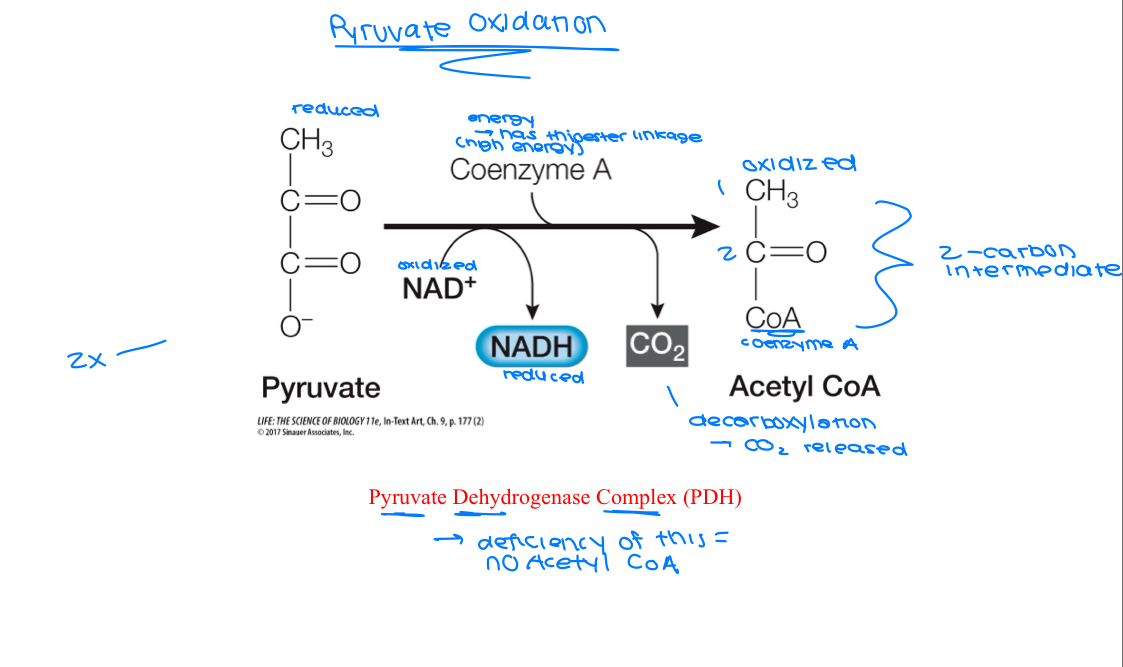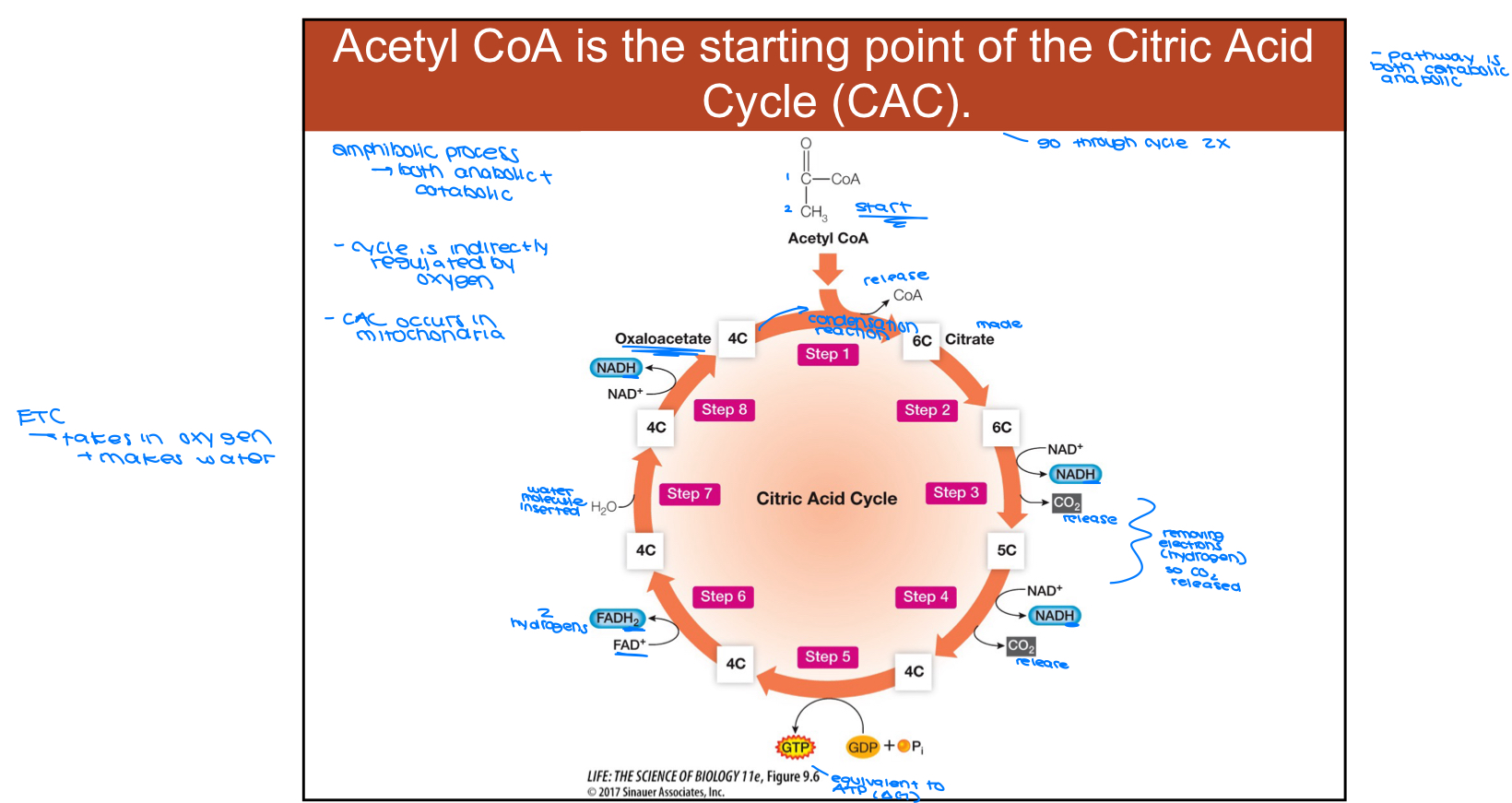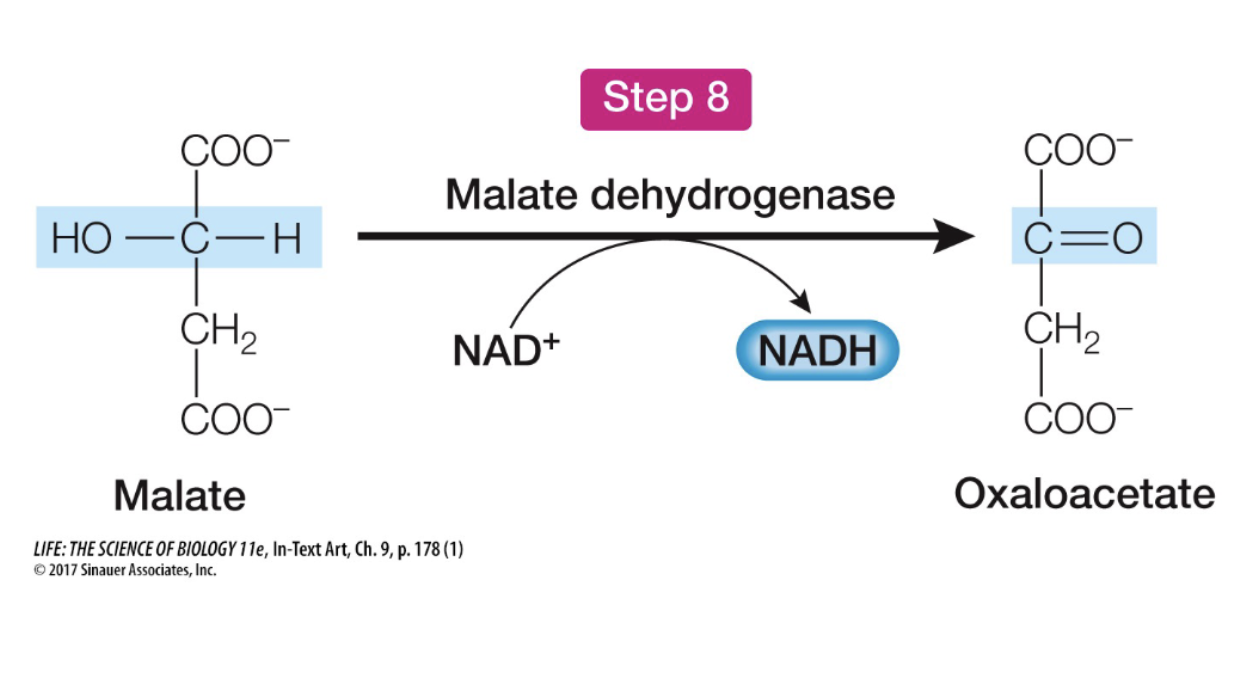Lecture 26 - Pyruvate Oxidation and the Citric Acid Cycle
0.0(0)
Card Sorting
1/6
There's no tags or description
Looks like no tags are added yet.
Study Analytics
Name | Mastery | Learn | Test | Matching | Spaced |
|---|
No study sessions yet.
7 Terms
1
New cards
Pyruvate Oxidation
pyruvate must be converted to acety CoA before being further oxidized in the citric acid cycle

2
New cards

3
New cards
Final step of citric acid cycle (step 8) shows how energy is harvested
Malate is reduced via malate dehydrogenase to oxaloacetate
NAD+ is oxidized to NADH
1st hydrogen of hydride ion is released
2nd hydrogen is releases as a proton

4
New cards
The availability of acetyl CoA determines how many intermediates are in the pathway at a given time
5
New cards
Produces of 1 glucose —> glycolysis —> pyruvate oxidation —> CAC
6 CO2, 10 NADH, 2 FADH2, 4 ATP (2 ATP, 2 GTP)
6
New cards
7
New cards
Is glucose completely oxidized at the end of the citric acid cycle?
No